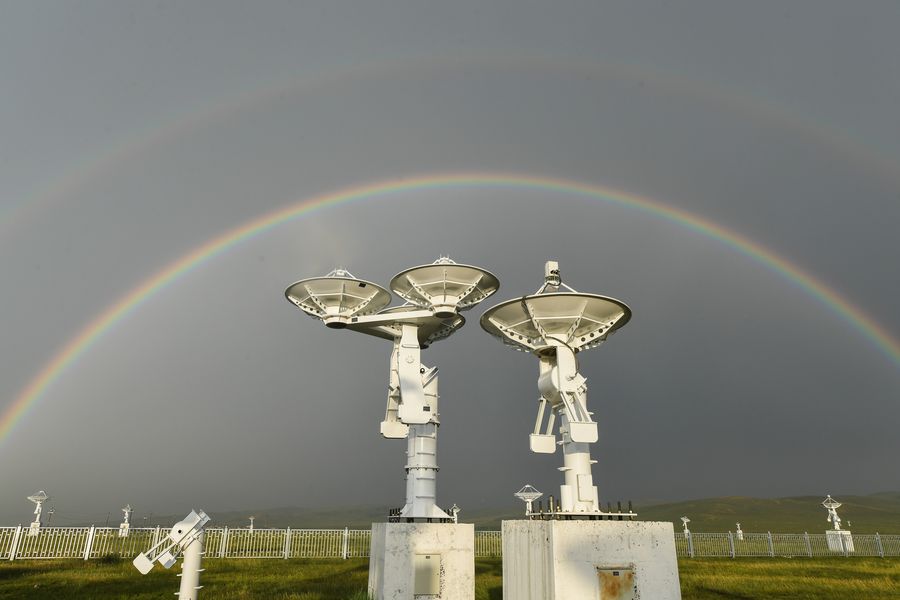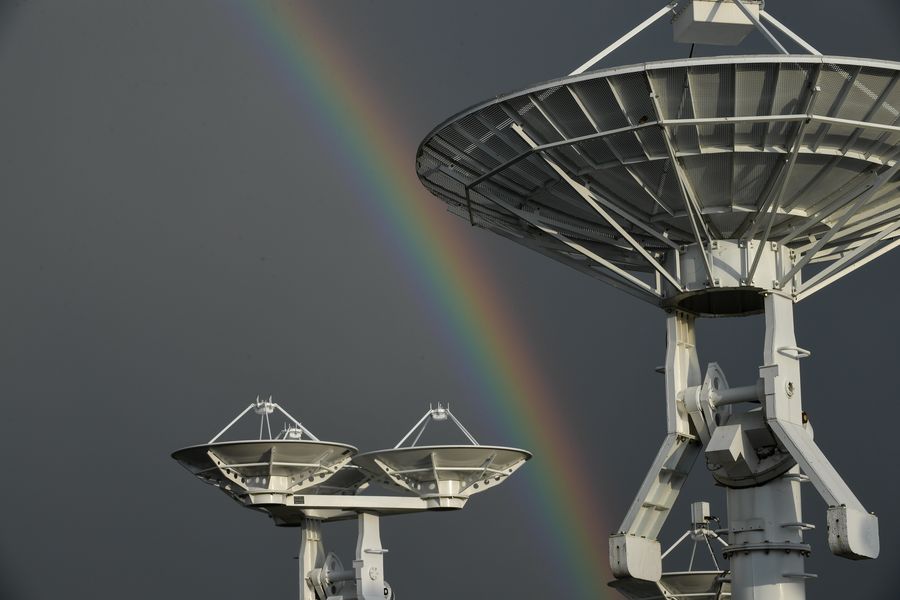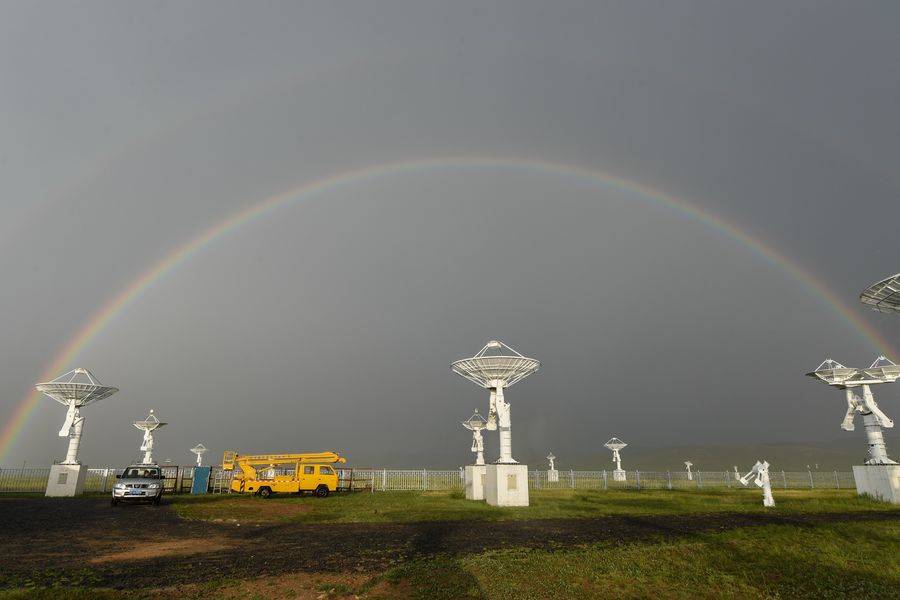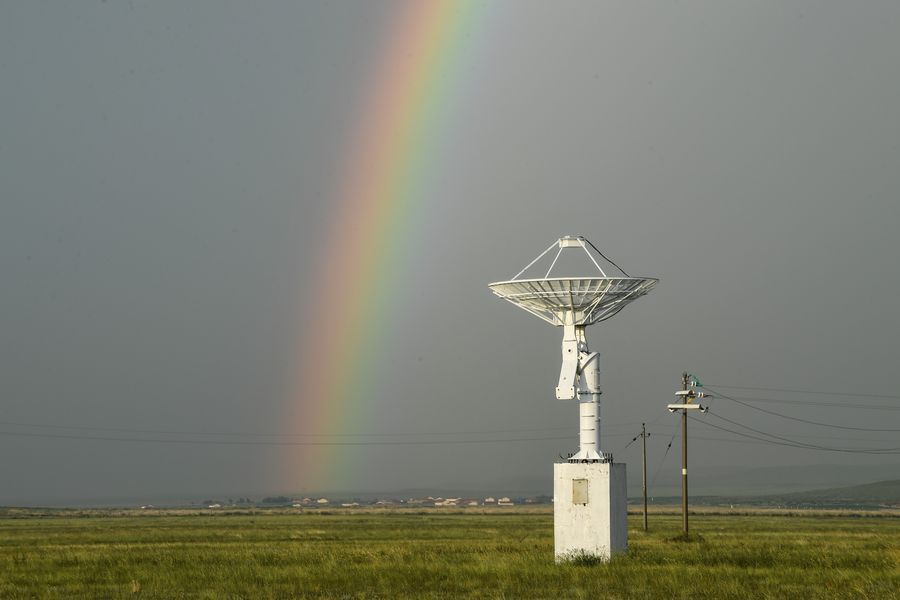
A rainbow emerges over the Ming'antu observing station of the National Astronomical Observatories of the Chinese Academy of Sciences, in Zhengxiangbai Qi, north China's Inner Mongolia Autonomous Region. (Xinhua/Liu Lei)
ZHENGXIANGBAI QI, July 29, 2019 (Xinhua) -- Like a sci-fi film! The Ming'antu observing station of the National Astronomical Observatories of the Chinese Academy of Sciences, in Zhengxiangbai Qi, north China's Inner Mongolia Autonomous Region, is composed of 3 sections: operation area, working office area and the 3 arm extending 3km wide where the antennas are distributed.
Ming Antu is a famous astronomer of Mongolian ethnic group of Qing Dynasty (1644-1911). The minor planet No.28242 was named "Ming Antu Star" to memorize his achievement in astronomy. The Ming'antu Spectral radioheliograph (MUSER) consists of 100 antennas with different frequency spectra covering an area of 10 square km. It can monitor solar activities on a wide imaging resolution spectrum. It was renamed from CSRH (Chinese Spectral Radioheliograph) after its accomplishment.
 A rainbow emerges over the Ming'antu observing station of the National Astronomical Observatories of the Chinese Academy of Sciences, in Zhengxiangbai Qi, north China's Inner Mongolia Autonomous Region. (Xinhua/Liu Lei)
A rainbow emerges over the Ming'antu observing station of the National Astronomical Observatories of the Chinese Academy of Sciences, in Zhengxiangbai Qi, north China's Inner Mongolia Autonomous Region. (Xinhua/Liu Lei)

A rainbow emerges over the Ming'antu observing station of the National Astronomical Observatories of the Chinese Academy of Sciences, in Zhengxiangbai Qi, north China's Inner Mongolia Autonomous Region. (Xinhua/Liu Lei)

A rainbow emerges over the Ming'antu observing station of the National Astronomical Observatories of the Chinese Academy of Sciences, in Zhengxiangbai Qi, north China's Inner Mongolia Autonomous Region. (Xinhua/Liu Lei)



